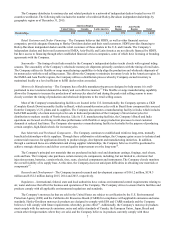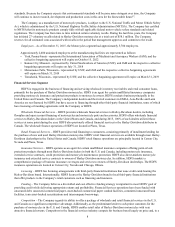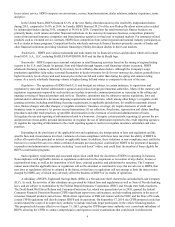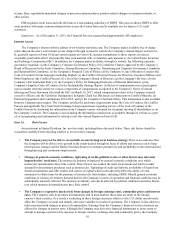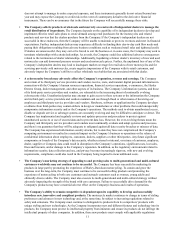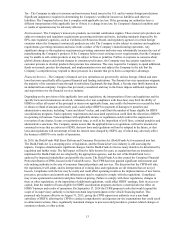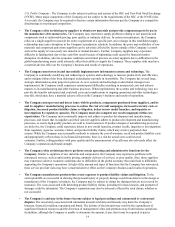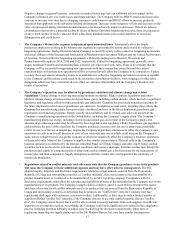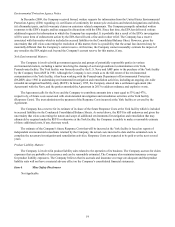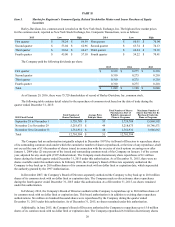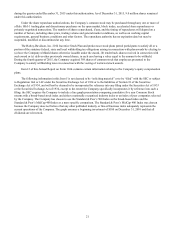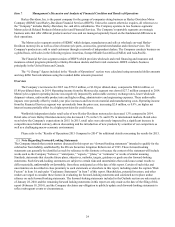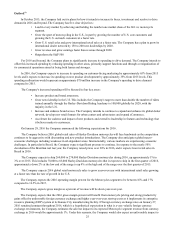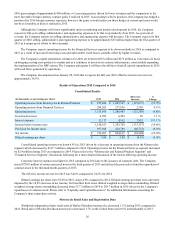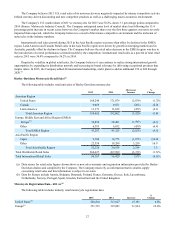Harley Davidson 2015 Annual Report Download - page 17
Download and view the complete annual report
Please find page 17 of the 2015 Harley Davidson annual report below. You can navigate through the pages in the report by either clicking on the pages listed below, or by using the keyword search tool below to find specific information within the annual report.17
Negative changes in general business, economic or market factors may have an additional adverse impact on the
Company’s financial services credit losses and future earnings. The Company believes HDFS' retail credit losses may
continue to increase over time due to changing consumer credit behavior and HDFS' efforts to increase prudently
structured loan approvals in the sub-prime lending environment. Increases in the frequency of loss and decreases in the
value of repossessed Harley-Davidson branded motorcycles also adversely impact credit losses. If there are adverse
circumstances that involve a material decline in values of Harley-Davidson branded motorcycles, those circumstances
or any related decline in resale values for Harley-Davidson branded motorcycles could contribute to increased
delinquencies and credit losses.
• The Company’s Motorcycles segment is dependent upon unionized labor. Substantially all of the hourly
production employees working in the Motorcycles segment are represented by unions and covered by collective
bargaining agreements. Harley-Davidson Motor Company is currently a party to five collective bargaining agreements
with local affiliates of the International Association of Machinists and Aerospace Workers and the United Steelworkers
of America. Current collective bargaining agreements with hourly employees in Missouri, Wisconsin and
Pennsylvania will expire in 2018, 2019 and 2022, respectively. Collective bargaining agreements generally cover
wages, healthcare benefits and retirement plans, seniority, job classes and work rules. There is no certainty that the
Company will be successful in negotiating new agreements with these unions that extend beyond the current
expiration dates or that these new agreements will be on terms that will allow the Company to be competitive. Failure
to renew these agreements when they expire or to establish new collective bargaining agreements on terms acceptable
to the Company and the unions could result in the relocation of production facilities, work stoppages or other labor
disruptions which may have a material adverse effect on customer relationships and the Company’s business and
results of operations.
• The Company’s operations may be affected by greenhouse emissions and climate change and related
regulations. Climate change is receiving increasing attention worldwide. Many scientists, legislators and others
attribute climate change to increased levels of greenhouse gases, including carbon dioxide, which has led to significant
legislative and regulatory efforts to limit greenhouse gas emissions. Congress has previously considered and may in
the future implement restrictions on greenhouse gas emissions. In addition, several states, including states where the
Company has manufacturing plants, have previously considered and may in the future implement greenhouse gas
registration and reduction programs. Energy security and availability and its related costs affect all aspects of the
Company’s manufacturing operations in the United States, including the Company’s supply chain. The Company’s
manufacturing plants use energy, including electricity and natural gas, and certain of the Company’s plants emit
amounts of greenhouse gas that may be affected by these legislative and regulatory efforts. Greenhouse gas regulation
could increase the price of the electricity the Company purchases, increase costs for use of natural gas, potentially
restrict access to or the use of natural gas, require the Company to purchase allowances to offset the Company’s own
emissions or result in an overall increase in costs of raw materials, any one of which could increase the Company’s
costs, reduce competitiveness in a global economy or otherwise negatively affect the Company’s business, operations
or financial results. Many of the Company’s suppliers face similar circumstances. Physical risks to the Company’s
business operations as identified by the Intergovernmental Panel on Climate Change and other expert bodies include
scenarios such as sea level rise, extreme weather conditions and resource shortages. Extreme weather may disrupt the
production and supply of component parts or other items such as natural gas, a fuel necessary for the manufacture of
motorcycles and their components. Supply disruptions would raise market rates and jeopardize the continuity of
motorcycle production.
• Regulations related to conflict minerals and other materials that the Company purchases to use in its products
will cause the Company to incur additional expenses and may have other adverse consequences. The SEC
adopted inquiry, diligence and disclosure requirements related to certain minerals sourced from the Democratic
Republic of Congo and surrounding countries, or "conflict minerals", that are necessary to the functionality of a
product manufactured, or contracted to be manufactured, by an SEC reporting company. Compliance with the
disclosure requirements could affect the sourcing and availability of some of the minerals that the Company uses in the
manufacturing of its products. The Company's supply chain is complex, and if it is not able to determine the source
and chain of custody for all conflict minerals used in its products that are sourced from the Democratic Republic of
Congo and surrounding countries or determine that its products are "conflict free", then the Company may face
reputational challenges with customers, investors or others. Additionally, as there may be only a limited number of
suppliers offering "conflict free" minerals, if the Company chooses to use only conflict minerals that are "conflict
free", the Company cannot be sure that it will be able to obtain necessary materials from such suppliers in sufficient
quantities or at competitive prices. Accordingly, the Company could incur significant costs related to the compliance
process, including potential difficulty or added costs in satisfying the disclosure requirements. Other laws or
regulations impacting our supply chain, such as the UK Modern Slavery Act, may have similar consequences.


